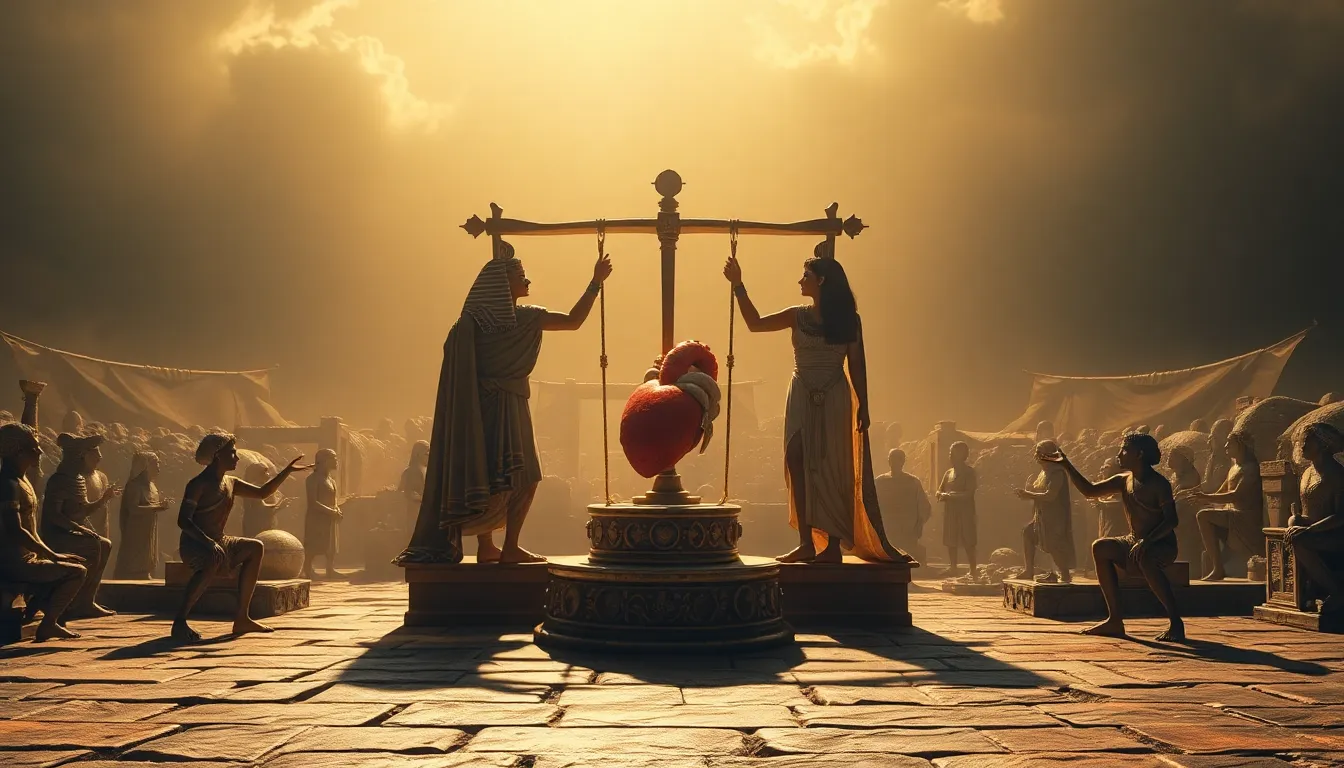The Myth of the Weighing of the Heart: Judgment in the Afterlife
I. Introduction
The concept of judgment in the afterlife has been a central theme in many cultures throughout history. In ancient Egypt, this belief was intricately tied to their understanding of morality, order, and the universe. The myth of the weighing of the heart is perhaps the most significant representation of this concept, illustrating the journey of the soul after death and the criteria by which it would be judged.
This myth serves not only as a narrative about the afterlife but also as a reflection of the values and beliefs of ancient Egyptian society. Understanding the intricacies of this myth and its cultural significance provides valuable insights into the spiritual life of the Egyptians and their enduring legacy.
II. Historical Context
The origins of the myth of the weighing of the heart can be traced back to ancient Egyptian beliefs surrounding death and the afterlife. It is believed that these ideas began to form during the Early Dynastic Period, around 3100 BCE, as Egyptians began to develop complex religious systems.
Throughout different dynasties, the myth evolved, influenced by changes in political power, religious practices, and interactions with neighboring cultures. For instance, the incorporation of elements from the surrounding Nubian and Mesopotamian cultures enriched the Egyptian understanding of the afterlife.
III. The Weighing of the Heart Ceremony
The weighing of the heart ceremony is a critical event in the journey of the deceased. It involves several key figures:
- Anubis: The god of mummification and the afterlife, who guides souls to the judgment.
- Osiris: The god of the underworld, who presides over the judgment of the dead.
- Thoth: The god of wisdom and writing, who records the results of the weighing.
The ceremony itself unfolds in a series of steps:
- The deceased is brought before Osiris, where Anubis prepares the heart for weighing.
- The heart of the deceased is placed on one side of a scale.
- A feather, representing Ma’at, is placed on the other side of the scale.
- Thoth records the outcome of the weighing, determining the fate of the soul.
The heart symbolizes the person’s essence, while the feather represents truth and justice. This juxtaposition emphasizes the importance of living a life aligned with Ma’at, the principle of order in the universe.
IV. The Role of Ma’at
Ma’at is a fundamental concept in ancient Egyptian mythology, symbolizing truth, balance, and cosmic order. As a goddess, she is often depicted with an ostrich feather, which is central to the weighing ceremony.
The significance of Ma’at goes beyond the afterlife; it reflects the moral and ethical standards by which Egyptians were expected to live their lives. Living in accordance with Ma’at meant embodying virtues such as honesty, justice, and harmony. Those who strayed from this path would face dire consequences in the afterlife.
V. Consequences of Judgment
The outcomes of the weighing of the heart ceremony are profound:
- The Righteous: If the heart is lighter than the feather, the soul is deemed worthy and is granted access to the Field of Reeds, a paradise where they can enjoy eternal life.
- The Wicked: If the heart is heavier, representing a life of wrongdoing, the soul faces annihilation or eternal punishment, often depicted as being devoured by Ammit, a fearsome creature that is part crocodile, lion, and hippopotamus.
VI. Cultural Impact
The myth of the weighing of the heart has left a lasting impact on Egyptian art and literature. It is frequently depicted in tomb paintings, papyrus scrolls, and inscriptions, serving as a reminder of the importance of moral conduct.
The representation of the weighing ceremony in burial practices underscores its significance. Tombs were often equipped with texts and images to guide the deceased through the judgment process, ensuring their successful passage into the afterlife.
Moreover, the legacy of this myth extends beyond ancient Egypt, influencing subsequent religious and philosophical thought, including concepts of sin, virtue, and the afterlife in various cultures.
VII. Comparative Analysis
When comparing the weighing of the heart to other cultures’ afterlife judgment concepts, several similarities and differences emerge:
- Christianity: The concept of judgment is present, with the soul being judged based on faith and deeds, but it lacks the physical weighing of a heart.
- Greek Mythology: The Greeks also believed in a judgment process, with souls being judged by Hades, but the focus was more on the destination rather than a specific weighing ritual.
These comparisons highlight broader implications for understanding morality and ethics across cultures, suggesting a universal concern with the consequences of one’s actions in life.
VIII. Conclusion
The myth of the weighing of the heart serves as a profound reflection of ancient Egyptian beliefs regarding judgment and the afterlife. Its significance lies not only in the narrative itself but also in the moral framework it provides for understanding human behavior.
As we reflect on the enduring nature of judgment in human belief systems, it becomes clear that such myths continue to resonate in contemporary discussions about morality, ethics, and what lies beyond death. The weighing of the heart remains a powerful symbol of the values we hold and the consequences we face for our choices.




